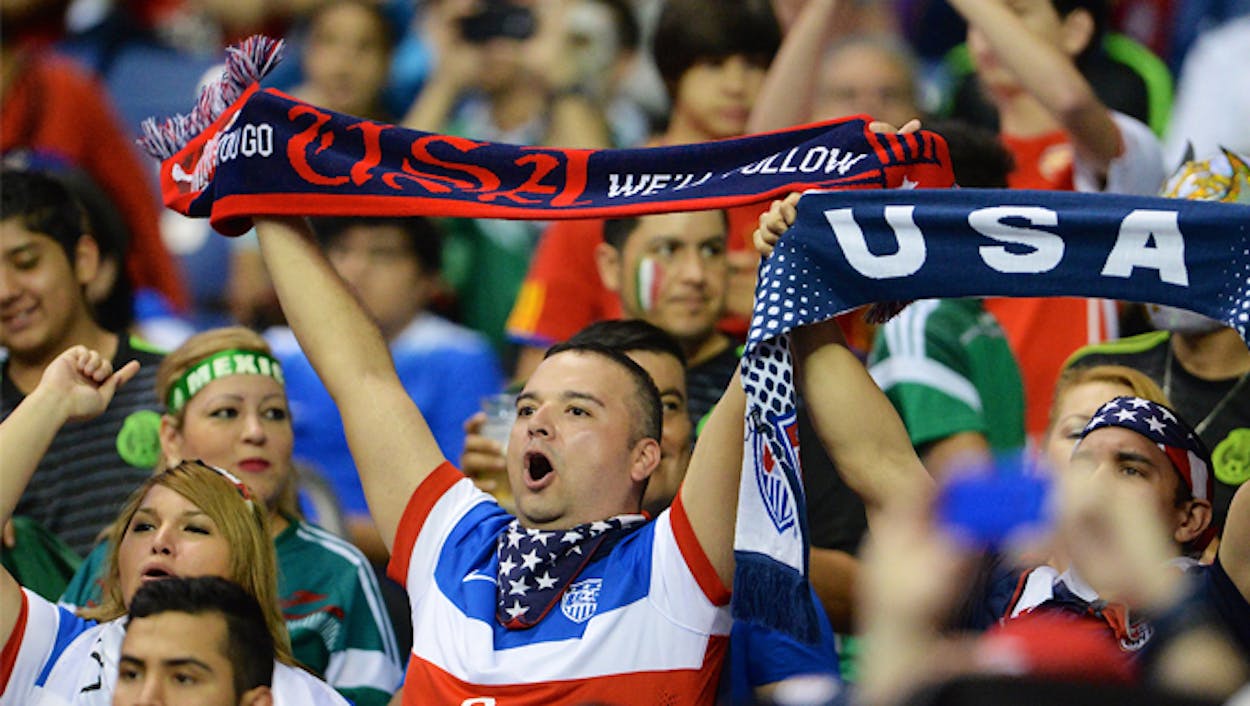Rene Medellin and Sergio Tristan have a few things in common. They’re both U.S. military veterans. Both of them were born in Texas and trace their family roots back to the Mexican state of San Luis Potosí. They both are huge soccer fans, a passion they share with their sons. But last Wednesday night, they found themselves at opposite ends of the Alamodome, divided by the length of the field and their love for rival teams.
It was the annual soccer match between the U.S. and Mexico, a sold-out affair that drew more than 65,000 fans to the stadium, and Medellin, the president of the local chapter of the American Outlaws, a rowdy group of fans who support the U.S. men’s team, rooted and sang for his team from his seat in the south end. On the opposite side of the field, Tristan, the founder of “Pancho Villa’s Army,” a boisterous fan club that roots for Mexico, cheered and yelled just as loud and vocally for the 90 minutes of play.
And it seems his team had more fans its side; probably two-thirds of the crowd were decked out in Mexico gear.
Even though it was a home game for the U.S., there are reasons Mexico was able to draw that many more supporters. Not only is it a matter of location—San Antonio is situated a mere 150 miles from the Mexican border—but Texas, specifically South Texas, has a predominantly Hispanic population that fosters a strong sense of cultural identity.
“Gathering among fellow Mexicans and Mexican-Americans, speaking in Spanish, eating our food, and just enjoying the way we celebrate through sports has been my primary drive,” said Tristan. “For many of us, we grew up in close-knit communities of fellow Mexican immigrants.”
It also helps that El Tri (short for El Tricolor, a nod to the green, white, and red used in the Mexican flag) is perhaps the most popular soccer team in the United States, as evidenced by their ability to sell out stadiums during their 2014 American tour. In fact, when owner Jerry Jones opened Cowboys Stadium, the enormous arena’s first sporting event was a sold-out soccer match that featured Mexico playing Haiti (Mexico won 2-0).
But fanaticism is a many-splendored thing. Just as it can be born of loyalty to a player or a coach, or passed down from a father or mother like hair or eye color, loyalties to a team can be as simple where you call home. “I was born here,” Medellin said. “That’s why I’m going to go for the U.S. team.” Seemed like straight-forward enough reasoning for fandom, a state of being that excites passion bordering on irrationality.
In the end, the smaller contingent enjoyed the big victory: the U.S. defeated Mexico, 2-0, on second-half goals by Jordan Morris and Juan Agudelo. As the clock wound down, American fans gleefully chanted “dos a cero” (two to zero), echoing the score from the last three times the U.S. and Mexico met in a World Cup qualifying match. It was the first time the teams had played in a year, and although Mexico holds a 33-19-14 edge in the rivalry, the U.S. holds a 13-5-5 advantage since the 2000s. The last time Mexico defeated the U.S. was back in 2011. Not that stats matter. Win, lose, or draw, both Medellin and Tristan remain loyal to their teams.
- More About:
- Sports






